Articles > Geography
Know Bulgaria Largest Cities? Here are the top 25 to get you started.
1. Sofia (Population: 1,205,548)
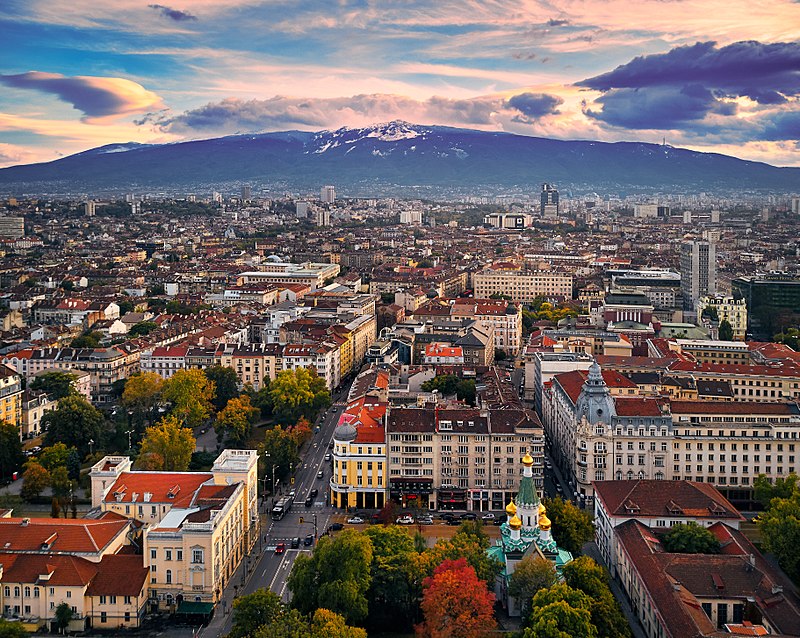
Sofia, the dynamic capital of Bulgaria, sits at the foot of the Vitosha Mountain and blends millennia of history with modern urban life. Traces of its Thracian, Roman, Ottoman, and Soviet past are visible in its streets, where ancient ruins stand beside sleek shopping boulevards. The city’s historic core includes landmarks like the Alexander Nevsky Cathedral, the Rotunda of St. George, and the National Palace of Culture. Sofia is also a green city, with wide boulevards shaded by trees and numerous parks offering peaceful retreats from the bustle. Its location has made it a crossroads of cultures, with influences from Eastern and Western Europe. Modern Sofia offers a thriving arts scene, diverse cuisine, and excellent transport links to mountain resorts and historical sites, making it both a political hub and a gateway to Bulgaria’s heritage.
Interesting Fact:
Sofia is one of the few European capitals with a mountain suitable for skiing just 30 minutes from the city center.
2. Plovdiv (Population: 329,489)
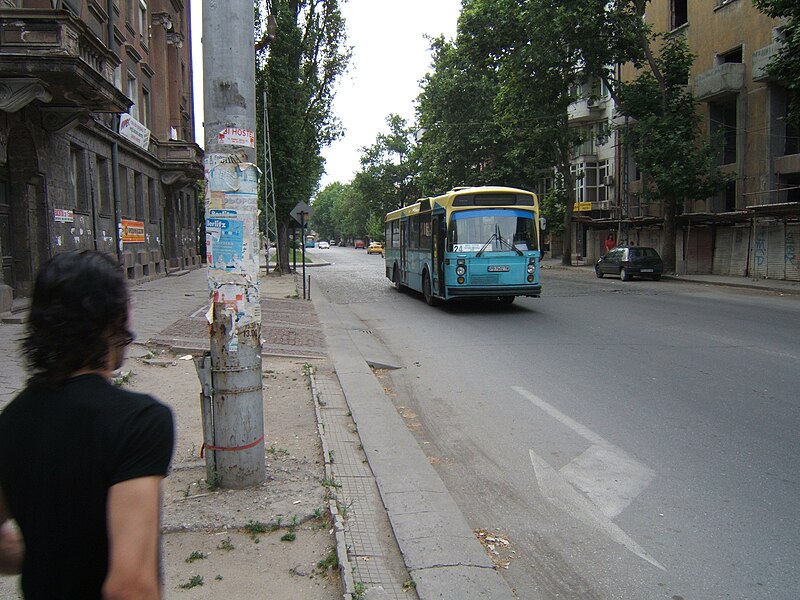
Plovdiv, one of the world’s oldest continuously inhabited cities, is a living museum of history and culture. Located along the Maritsa River, it boasts a stunning Old Town filled with colorful 19th-century National Revival houses, cobblestone streets, and archaeological treasures. The Roman Theater of Philippopolis remains a centerpiece of the city and still hosts performances today. Plovdiv’s layered past includes Thracian, Greek, Roman, Byzantine, and Ottoman influences, each leaving its mark on the architecture and traditions. Modern Plovdiv has a vibrant café culture, art galleries, and the trendy Kapana district, which has transformed into a hub for creatives. As the European Capital of Culture in 2019, the city invested heavily in preserving its heritage while expanding cultural programming. Visitors can enjoy panoramic views from its famous seven hills and explore the city’s rich culinary scene that blends traditional Bulgarian flavors with international trends.
Interesting Fact:
Plovdiv’s Roman Theater is one of the best-preserved ancient theaters in the world and can hold over 5,000 spectators.
3. Varna (Population: 318,737)

Varna, often called Bulgaria’s “Sea Capital,” is a major Black Sea port city known for its beaches, maritime heritage, and cosmopolitan atmosphere. Its history stretches back over 6,000 years, with the Varna Necropolis yielding the world’s oldest known gold artifacts. The city’s seafront promenade, the Sea Garden, is a sprawling park filled with sculptures, fountains, and views over the bay. Varna also boasts impressive museums, including the Archaeological Museum, which houses treasures from Thracian and Roman times. In summer, the city becomes a lively resort destination, attracting visitors with its sandy beaches, water sports, and vibrant nightlife. Beyond tourism, Varna serves as an important economic center, with a thriving shipping industry, universities, and cultural institutions. Its blend of historic charm, seaside relaxation, and modern amenities make it one of Bulgaria’s most appealing destinations.
Interesting Fact:
The Varna Necropolis gold treasure is over 1,000 years older than the Egyptian pyramids.
4. Burgas (Population: 189,014)

Burgas, the largest city in southeastern Bulgaria, is a key Black Sea port and gateway to the country’s southern coast. Surrounded by lakes and nature reserves, it offers both urban culture and natural beauty. The city’s expansive Sea Garden is a favorite spot for locals and tourists alike, lined with walking paths, sculptures, and cafés overlooking the water. Burgas has a rich history as a fishing and trade hub, and today it thrives as a center for industry, tourism, and culture. It hosts music festivals, art exhibitions, and maritime events throughout the year. Its location makes it an ideal base for exploring nearby resorts such as Sunny Beach and historic towns like Nessebar. The combination of coastal relaxation, cultural vibrancy, and accessible transport links makes Burgas a well-rounded destination for travelers.
Interesting Fact:
Lake Atanasovsko, near Burgas, turns pink due to its high salt content and is a habitat for flamingos.
5. Stara Zagora (Population: 121,249)

Stara Zagora, in central Bulgaria, is celebrated for its orderly grid layout, first designed during Roman times. Known as the “city of linden trees,” it offers wide boulevards, shaded parks, and a mix of ancient and modern architecture. Archaeological finds here date back thousands of years, with notable sites including Roman baths, an amphitheater, and Neolithic dwellings. The Regional Historical Museum showcases artifacts from Thracian, Roman, and medieval Bulgarian periods. Stara Zagora also has a strong cultural presence, with theaters, galleries, and music events enriching city life. Its location makes it an important economic and transport hub, linking northern and southern Bulgaria. The city’s blend of history, greenery, and modern infrastructure has made it one of the country’s most livable places.
Interesting Fact:
Stara Zagora is home to some of Europe’s best-preserved Neolithic houses, over 8,000 years old.
6. Ruse (Population: 121,168)
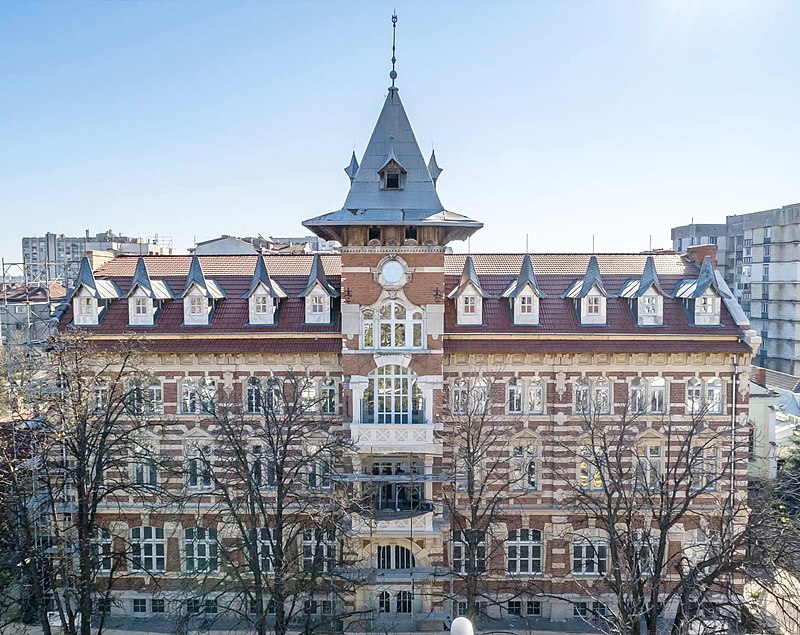
Ruse, located on the right bank of the Danube River, is one of Bulgaria’s most elegant and historically rich cities. Often called “Little Vienna,” Ruse is known for its impressive 19th and early 20th-century neoclassical architecture, much of which was built when the city was a major trading hub in the Ottoman Empire. The city’s Freedom Square, framed by grand public buildings and fountains, is a popular gathering spot. Cultural institutions such as the Ruse Opera and Regional Historical Museum highlight the city’s artistic and educational legacy. Ruse’s riverside promenade offers scenic walks and views across to Romania. As a major river port, it plays an important role in Bulgaria’s economy, while also attracting tourists with its combination of culture, history, and riverside charm.
Interesting Fact:
Ruse was the first Bulgarian city to introduce an electric tram system in 1901.
7. Pleven (Population: 88,565)
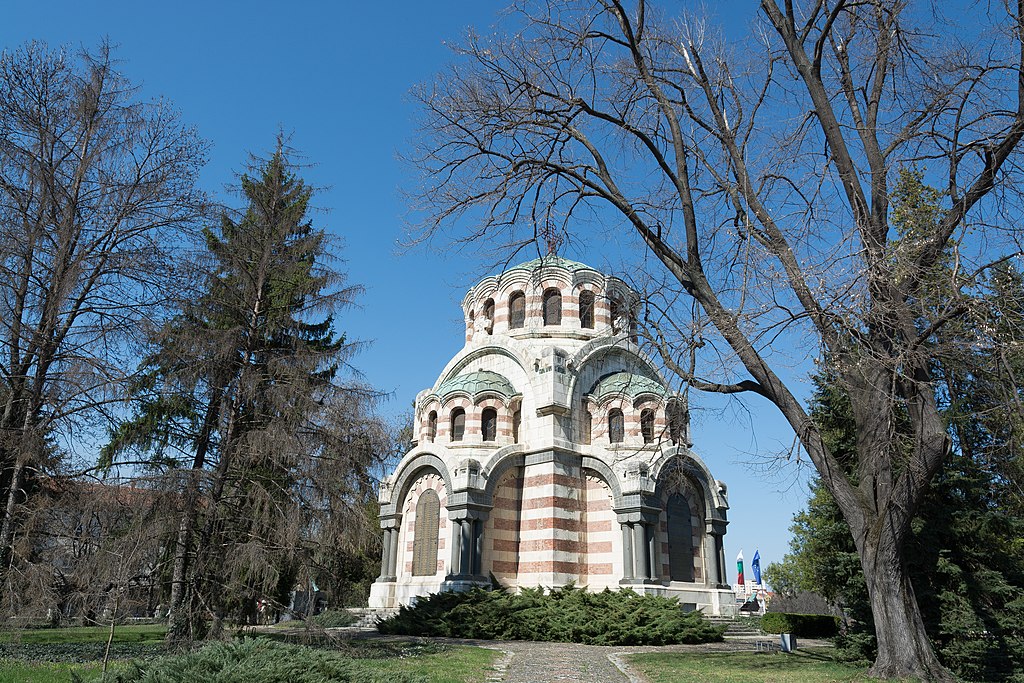
Pleven is a city steeped in military history, best known for its role in the Russo-Turkish War of 1877–1878, which led to Bulgaria’s liberation from Ottoman rule. The Pleven Panorama, a massive circular painting and diorama, commemorates the Siege of Pleven and attracts visitors from around the world. The city’s central area is pedestrian-friendly, lined with shops, cafés, and cultural venues. Surrounded by fertile farmland, Pleven is also an important agricultural center. Modern Pleven is home to universities, theaters, and museums that preserve its rich past. Its combination of historical significance and contemporary life makes it a fascinating destination for those interested in Bulgaria’s national story.
Interesting Fact:
The Pleven Panorama is one of only a few surviving panorama paintings of its kind in Europe.
8. Sliven (Population: 78,232)
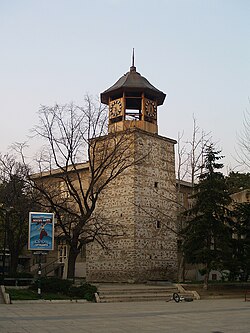
Sliven lies at the foot of the Blue Rocks Nature Park and is often called the “City of the 100 Voivodes” for its history of resistance against Ottoman rule. Known for its textile industry, Sliven was a leader in industrialization in Bulgaria during the 19th century. The city’s architecture reflects its heritage, with a mix of traditional Bulgarian Revival houses and modern structures. Outdoor enthusiasts are drawn to the surrounding nature park for hiking, climbing, and birdwatching. Sliven’s cultural life includes museums, art galleries, and folk festivals that celebrate its traditions.
Interesting Fact:
Sliven was home to Bulgaria’s first textile factory, established in 1834.
9. Dobrich (Population: 69,434)
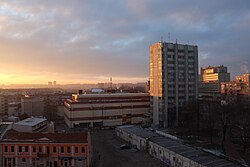
Dobrich, the main city in the Dobrudzha region, is an agricultural and economic hub often referred to as “The Granary of Bulgaria.” The city’s large central park offers a peaceful escape, while its museums preserve the history of the region’s rural traditions. Dobrich also serves as a gateway to the Black Sea, located less than an hour’s drive away. Modern Dobrich has developed into a vibrant urban center with cultural events, theaters, and sports facilities, making it a balanced blend of work, leisure, and heritage.
Interesting Fact:
Dobrich hosts the annual International Fair of Agriculture and Stock Breeding, one of the largest in the Balkans.
10. Shumen (Population: 66,641)
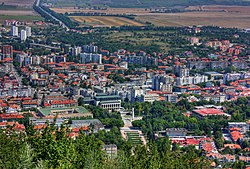
Shumen is a historic city with deep ties to Bulgaria’s early medieval history. It lies close to the ruins of Pliska and Preslav, the first two Bulgarian capitals, and the Madara Rider, a UNESCO World Heritage Site. The city itself is home to the massive Monument to 1300 Years of Bulgaria, visible from miles away. Shumen has a lively cultural scene, with theaters, museums, and festivals. Its location in northeastern Bulgaria makes it an important regional center for education and commerce.
Interesting Fact:
The Monument to 1300 Years of Bulgaria is one of the largest concrete monuments in Europe.
11. Pernik (Population: 65,799)
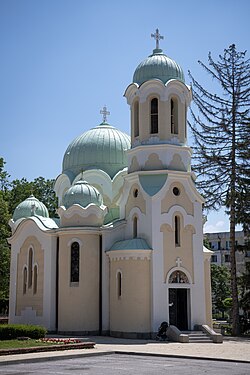
Pernik, just southwest of Sofia, is historically an industrial and mining city. Once a major coal mining center, it has been transforming into a more diversified economy in recent years. The city’s cultural highlight is the Surva International Festival of Masquerade Games, a colorful event attracting performers from around the world. Its proximity to Sofia makes it an important commuter hub, while its local traditions and history give it a distinct identity.
Interesting Fact:
The Surva Festival is one of the largest masquerade events in Eastern Europe.
12. Haskovo (Population: 63,314)
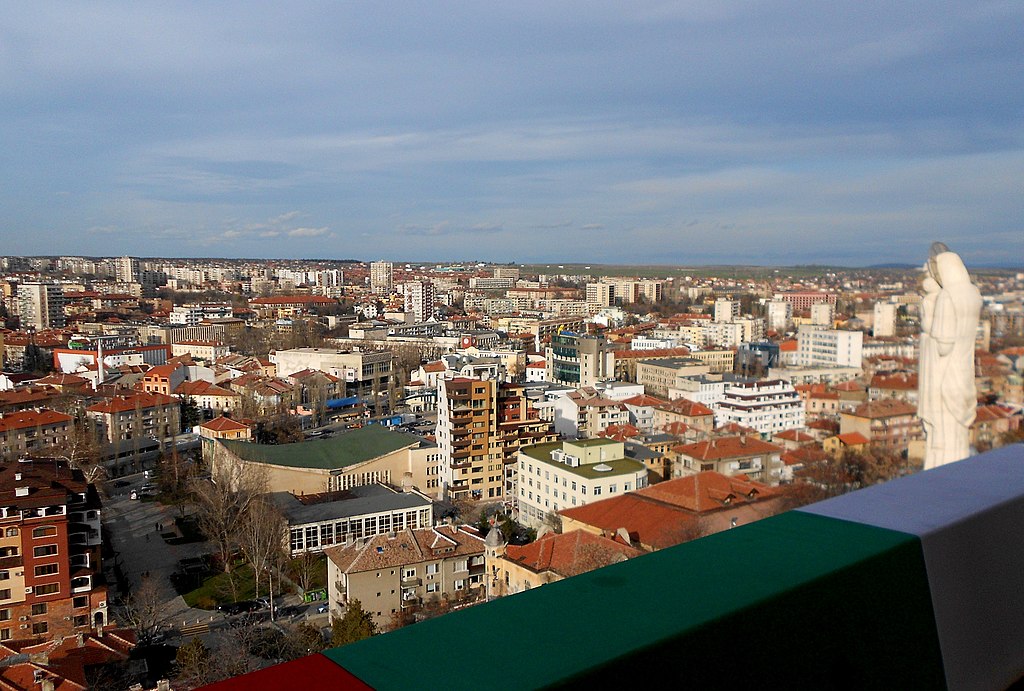
Haskovo, in southern Bulgaria, is famous for its monumental statue of the Virgin Mary, recognized by the Guinness World Records as one of the tallest of its kind. The city is a center for agriculture and trade, with fertile lands surrounding it. Its history includes Thracian, Roman, and Ottoman influences, which are reflected in its archaeological finds and architecture. Haskovo also serves as a gateway to Greece and Turkey, making it strategically important for commerce and tourism.
Interesting Fact:
Haskovo celebrates the Day of the Holy Mother of God as its official holiday.
13. Blagoevgrad (Population: 62,670)
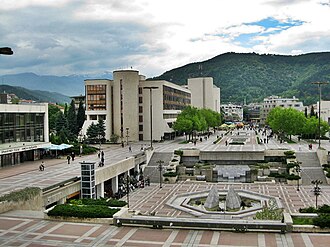
Blagoevgrad, in southwestern Bulgaria, is a youthful and lively city thanks to its universities, including the American University in Bulgaria. It has a charming pedestrian center with cafés, shops, and cultural venues. The city’s location near the Pirin Mountains makes it a base for outdoor activities like hiking and skiing. Its history includes Thracian settlements and medieval fortresses, adding depth to its modern character.
Interesting Fact:
Blagoevgrad has one of the sunniest climates in Bulgaria.
14. Veliko Tarnovo (Population: 59,870)
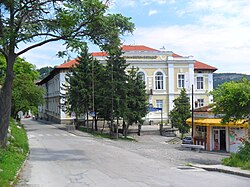
Veliko Tarnovo, the medieval capital of Bulgaria, is famous for its dramatic hillside setting and the imposing Tsarevets Fortress. The fortress walls and towers dominate the skyline, while the old town’s winding streets reveal traditional houses and artisan shops. The city has a strong cultural identity, hosting festivals, concerts, and theatrical performances that recall its royal past. As a popular tourist destination, Veliko Tarnovo offers both historical immersion and vibrant modern life.
Interesting Fact:
The Tsarevets Fortress features a spectacular evening light and sound show.
15. Yambol (Population: 59,364)
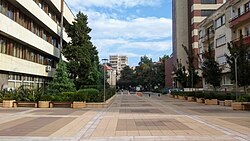
Yambol, in southeastern Bulgaria, is a city with deep Thracian roots. It lies along the Tundzha River and serves as a regional center for agriculture and industry. The city’s historical sites include medieval fortresses and churches, while its modern side features museums, theaters, and sports venues. Yambol is also known for its annual Kukeri festival, where masked dancers perform to chase away evil spirits.
Interesting Fact:
The Kukeri tradition in Yambol is recognized as part of Bulgaria’s intangible cultural heritage.
16. Pazardzhik (Population: 54,297)
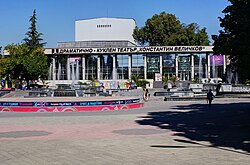
Pazardzhik, located in southern Bulgaria along the Maritsa River, is an important regional hub for agriculture, trade, and culture. The city is known for its wide streets and central square, which features the large Church of the Dormition of the Mother of God, one of the largest Orthodox churches in the Balkans. Founded by the Ottomans in the 15th century, Pazardzhik developed as a center for crafts and trade due to its strategic position between Plovdiv and Sofia. Today, it combines historical architecture with modern public buildings, parks, and a strong cultural life supported by theaters, art galleries, and museums. The fertile lands surrounding the city contribute to its reputation for agricultural production, particularly vegetables and fruit. Its location makes it a convenient stop for travelers exploring southern Bulgaria and the Rhodope Mountains.
Interesting Fact:
Pazardzhik is famous for having one of the tallest clock towers in Bulgaria, built in 1741.
17. Vratsa (Population: 48,147)
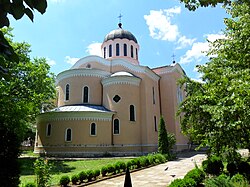
Vratsa, nestled at the foot of the Vrachanski Balkan mountain range, is a city that blends dramatic natural beauty with deep historical roots. The nearby Vrachanski Balkan Nature Park offers spectacular cliffs, caves, and hiking trails, making Vratsa a favorite destination for nature lovers. The city’s history stretches back to Thracian and Roman times, with archaeological finds displayed in the Regional Historical Museum. Vratsa is also home to the Ledenika Cave, one of Bulgaria’s most famous caves, featuring impressive stalactites and stalagmites. Its central square is lined with public buildings, shops, and cafés, giving it a lively atmosphere. The surrounding region is known for traditional crafts and agriculture, adding to the city’s character. Vratsa’s blend of outdoor recreation, heritage, and urban life makes it an appealing stop in northwestern Bulgaria.
Interesting Fact:
The Vrachanski Balkan cliffs near Vratsa are among Bulgaria’s most popular rock climbing destinations.
18. Asenovgrad (Population: 45,362)
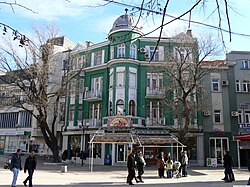
Asenovgrad, located at the foot of the Rhodope Mountains, is often called the “City of Brides” due to its many bridal fashion shops. The city’s history dates back to ancient Thracian times, but it is most famous for the medieval Asen’s Fortress, perched dramatically on a rocky hilltop. Asenovgrad is a spiritual center, home to numerous monasteries and churches, including the historic Bachkovo Monastery nearby. Wine production is another hallmark of the region, with local vineyards producing high-quality red and white wines. The surrounding landscapes offer hiking, rock climbing, and scenic drives into the Rhodopes. Asenovgrad’s mix of religious heritage, natural beauty, and modern commercial life gives it a distinctive identity among Bulgarian cities.
Interesting Fact:
Asenovgrad has over 40 churches, chapels, and monasteries within its municipal boundaries.
19. Gabrovo (Population: 43,710)
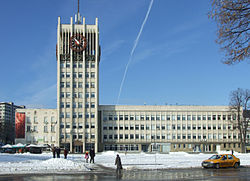
Gabrovo, situated in central Bulgaria along the Yantra River, is famed for its humor and wit, earning it the title “Capital of Humor.” This playful identity is celebrated at the House of Humour and Satire, a museum and cultural center that attracts artists from around the globe. The city has a long tradition of crafts and industry, and nearby is the open-air Etar Architectural-Ethnographic Complex, which preserves Bulgaria’s 19th-century craft heritage. Gabrovo’s location near the Balkan Mountains makes it a gateway to hiking and winter sports. Its central position has historically made it a hub for trade, and today it remains an active economic and cultural center.
Interesting Fact:
Gabrovo’s humor tradition includes a festival where locals jokingly “cut their cats’ tails” to save heat in winter.
20. Kardzhali (Population: 41,724)
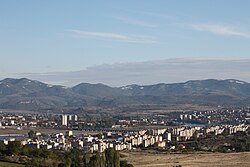
Kardzhali, in the Eastern Rhodope Mountains, is a culturally diverse city with a rich mix of Bulgarian, Turkish, and other influences. Its location near the Kardzhali Reservoir and the ancient Thracian city of Perperikon makes it a center for both tourism and history. The city has grown significantly in recent decades, with modern public spaces, schools, and cultural institutions. Kardzhali’s surroundings are dotted with archaeological sites, rock formations, and natural landmarks that draw visitors from across Bulgaria and beyond. It is also an important administrative and economic center for the region.
Interesting Fact:
Perperikon, near Kardzhali, is believed to have been a sacred Thracian city and an important religious site.
21. Kazanlak (Population: 41,537)
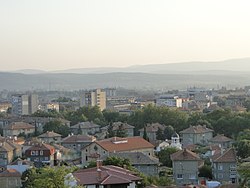
Kazanlak, in central Bulgaria, lies in the heart of the Rose Valley and is world-famous for its rose oil production. Every summer, the city hosts the Rose Festival, celebrating its centuries-old tradition of cultivating the Damask rose. Kazanlak is also home to the Thracian Tomb of Kazanlak, a UNESCO World Heritage Site decorated with remarkable frescoes. The city is surrounded by the Balkan Mountains and offers easy access to hiking trails, historic sites, and scenic landscapes. Its economy is tied closely to the rose industry, tourism, and light manufacturing, and it has a welcoming atmosphere for visitors.
Interesting Fact:
Bulgaria supplies around 70% of the world’s rose oil, much of it from Kazanlak.
22. Montana (Population: 35,045)
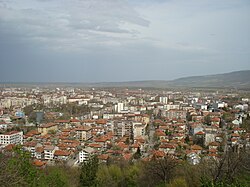
Montana, in northwestern Bulgaria, is a regional administrative and cultural center. Set against the backdrop of the Balkan Mountains, the city offers views of rugged peaks and rolling plains. Montana’s history spans Thracian, Roman, and medieval times, with the regional museum preserving artifacts from its long past. The city has undergone modernization in recent years, with renovated public spaces, parks, and cultural venues. It is also a starting point for exploring the natural beauty of the surrounding mountain ranges.
Interesting Fact:
Montana’s name comes from the Roman fortress Castra ad Montanesium, meaning “fortress by the mountains.”
23. Kyustendil (Population: 34,334)
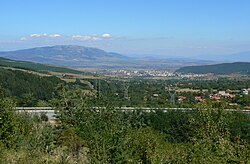
Kyustendil is a spa town with a history of settlement dating back to Neolithic times. Known for its mineral springs, it has been a wellness destination since Roman times when it was called Pautalia. The city’s mild climate, fruit orchards, and surrounding mountains add to its appeal. Kyustendil’s cultural heritage includes medieval churches, Ottoman architecture, and vibrant festivals that celebrate its agricultural bounty.
Interesting Fact:
Kyustendil is nicknamed the “Town of Apples” for its abundant orchards.
24. Vidin (Population: 33,448)
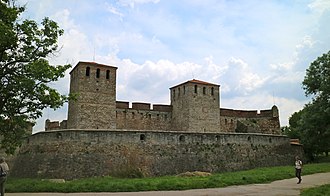
Vidin, on the banks of the Danube River, is best known for the medieval Baba Vida fortress, the only fully preserved medieval fortress in Bulgaria. The city has a rich history as a trade and military center, with influences from the Roman, Ottoman, and Bulgarian Empires. Today, Vidin combines its historical attractions with a relaxed riverside lifestyle. Its location makes it a key border crossing to Romania, fostering cross-border trade and tourism.
Interesting Fact:
Baba Vida Fortress served as a defensive stronghold for nearly 10 centuries.
25. Targovishte (Population: 32,627)
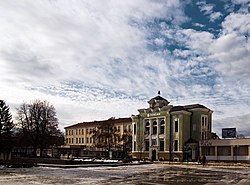
Targovishte, whose name means “marketplace,” has a long history as a center for commerce and trade in northeastern Bulgaria. The city’s development accelerated during the Ottoman period, when it became a regional hub for merchants. Modern Targovishte retains its role as an economic center, with industries in food processing, manufacturing, and services. The city is also known for its parks and cultural life, with festivals and events throughout the year. Its location between the Danube Plain and the Balkan Mountains makes it a natural meeting point for trade and travel.
Interesting Fact:
Targovishte hosts one of Bulgaria’s oldest annual fairs, dating back to the 18th century.




